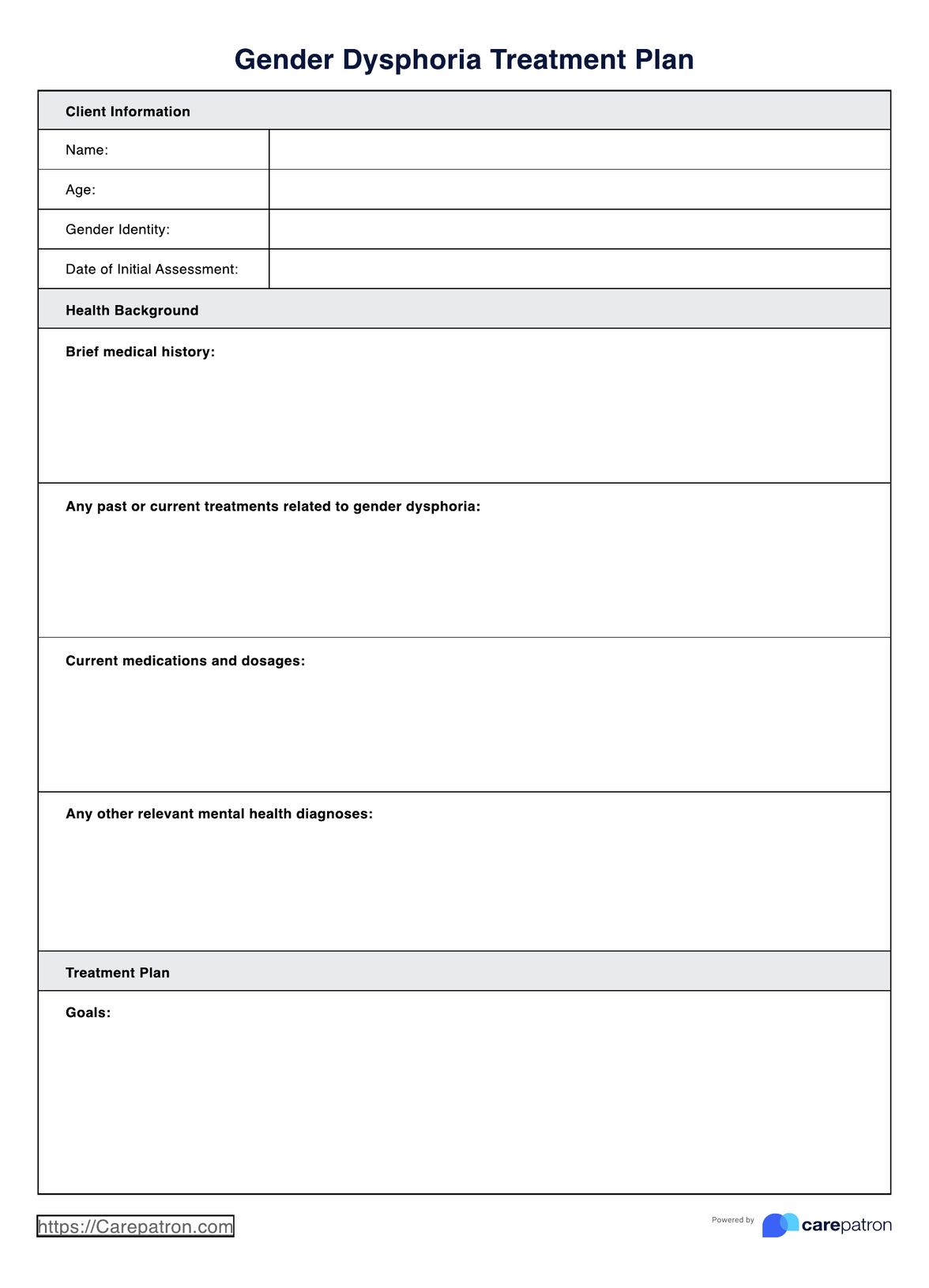No, gender confirmation surgery is not a requirement for gender dysphoria treatment. Each individual's treatment plan is unique and may include a combination of counseling, hormone therapy, and/or surgery, depending on their needs and preferences.

Gender Dysphoria Treatment Plans
Gender Dysphoria Treatment Plans are designed to help therapists create effective treatment plans for clients. Download the resource now and start providing extensive care.
Gender Dysphoria Treatment Plans Template
Commonly asked questions
Yes, in some cases, gender dysphoria treatment plans may be covered by insurance. However, coverage can vary depending on the insurance provider and the specific treatment plan. It is important to check with your insurance provider to determine your coverage.
While gender dysphoria cannot be completely eliminated, treatment can help alleviate the distress and improve the quality of life for individuals with gender dysphoria.
EHR and practice management software
Get started for free
*No credit card required
Free
$0/usd
Unlimited clients
Telehealth
1GB of storage
Client portal text
Automated billing and online payments











